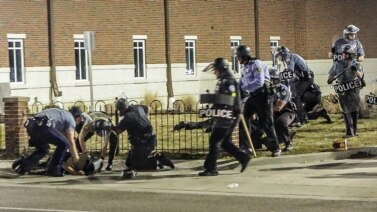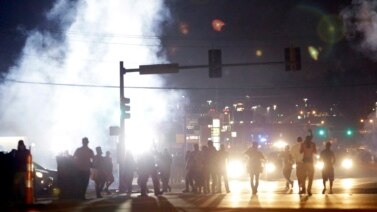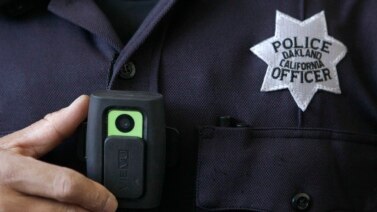The recent violence in Baltimore, Maryland follows incidents around the United States in which police officers have been accused of wrongdoing. As a result, police departments and civil rights groups have called for officers to wear cameras to record their activities.
On Friday, the Justice Department announced it would begin a body camera program to assist local police in law enforcement. Officials said the Obama administration will provide $20 million to police departments to help buy body cameras for officers. The money is part of a $75 million, three-year body camera funding program. President Barack Obama requested the program in December. The U.S. Congress still has to consider the other $55 million.
There are many questions about body cameras systems, including costs, control of camera images and the technology’s limits.
Charles McClelland is the Chief of Police in Houston, Texas. He supports the use of body cameras. But he admits they also present problems.
“The type of equipment, the placement of the equipment, the downloading time, storage space…all of those are significant challenges.”
For the past two years, the Houston Police Department has been using body cameras as part of an experimental program. The department deploys about 100 of the cameras on its officers each day.
Chief McClelland says deploying cameras on a few thousand officers and then dealing with all the video they produce will cost a lot of money. And those videos can only show part of what happens when the officer is on duty.
Body cameras usually offer a wide-angle view of what is in front of the camera lens. In other words, anything happening on either side of the camera or behind the officer is never recorded. Chief McClelland says that leaves out a lot.
“An officer may turn his or her head, and see something, but the video camera that is in the middle of their chest is pointing straight ahead.”
Rita Watkins is the head of the Law Enforcement Management Institute of Texas. She says there is statewide demand for body cameras.
“I can tell you that right now there are chiefs who are budgeting, within their budget and asking their community leadership for the funds to initiate and to start a body camera program.”
She says legal experts are considering how photographs and videos taken by average citizens should be treated.
“We also have got the public who is capturing video (with) cameras. And so how do they maintain it and what is their duty and responsibility for making that information available to law enforcement?”
Both she and the police chief are concerned about what happens if a video becomes corrupted, is damaged, or disappears.
“This technology is man-made and sometimes man-made objects will malfunction.”
Chief McClelland says a technical problem could fuel unrest in a city like Baltimore, where there already is distrust of the police. He worries that communication between officers and citizens may shrink because of the cameras.
“The officer is recording the citizen and the citizen may be using his or her cellphone to record the officer.”
Chief McClelland says body cameras can help law enforcement. But he says they also will become a continuing financial concern for police. He notes the cameras must be replaced over time by newer, better equipment.
I’m Caty Weaver.
This report was based on a story from VOA correspondent Greg Flakus in Houston. George Grow adapted it for Learning English. Caty Weaver was the editor.
Words in This Story
department – n. an office or agency of a larger organization
view – n. an observation; the way something is seen
initiate – v. to cause the beginning of (something): to start or begin (something)
maintain - v. to cause (something) to exist or continue without changing
malfunction – n. a problem; failure to operate


